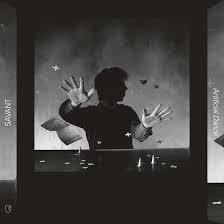Last year, when RVNG International released A Period Of Review, an archival retrospective of musician and auteur producer Kerry Leimer, it shone a more than deserved light on an artist who for years has been working on the fringes of the fringes of experimental music. Taking his cue from the works of Brian Eno and his collaborations with krautrock pioneers such as Dieter Moebius, Hans-Joachim Roedelius, and Conny Plank, A Period Of Review was an intimate sonic notebook of a man who set out on his own to explore and develop as far as he could within limited means, using only a Rickenbacker bass, Minimoog, tape decks, and a handful of effects pedals. The result was an interstitial album, a snapshot of disparate sounds, moods and textures, with meditative synths winding their way through repetitive tape loops, vocal samples, industrial sound collage techniques and dub bass.
To answer the question of what Leimer did next, RVNG have now released Artificial Dance, a compilation reissue of tracks from Leimer’s "band" Savant, collecting together their 1983 album The Neo-Realist, their sole 12" release, and several compilation and unreleased tracks. If A Period Of Review focused on an artist creating meditative soundscapes in pensive seclusion, then Artificial Dance sought to be the opposite, as Leimer tried to capture the raw energy of creative fervour, focusing instead on rhythmic elements and avant garde affections.
To achieve such conditions, Leimer deploys his own form of oblique strategies. Savant’s line-up would never be static (Leimer was the sole established member), instead calling upon a rota of musicians from Seattle’s post-punk experimental music scene such as Marc Barreca, John Foster, Jim and David Keller and Alex Petit of the New Flamingos. To add to the sense of musical détournement, the band members played instruments they were not used to playing, only being given basic rhythm direction by Leimer at the mixing desk. Once Savant began to improvise and move the desired musical direction, Leimer would record the session whereupon he would afterwards mould and fashion the results to match his ideas.
On first listen, Artificial Dance is slightly deranged and confused. The lack of distinct melody and the highly repetitive rhythms are at first rather impenetrable and it takes several listens before locking into the groove of the tracks. Many of the tracks on Artificial Dance contain circular arabesque drum loops incorporating West African percussive polyrhythms, with ambient synth washes, clipped and stuttering vocal samples, and various clicks, pops and bangs smeared with a metallic timbre. Despite the vocal samples, only two songs have actual vocals – ‘The Neo-Realist’ has a slightly unhinged monologue of a man’s encounter street evangelists, while ‘Knowledge And Action’ conveys a news item highlighting the era’s sub-Saharan geopolitics and the South African apartheid system.
The press release for Artificial Dance cites Brian Eno and David Byrne’s collaboration album My Life In The Bush Of Ghosts as a stylistic contemporary. Both albums adhere to John Hassell’s "fourth world" ethos of combining electronic sounds and modern recording techniques with Asian and African musical styles, as well as utilising what Simon Reynolds refers to as a "rampant texturology", with vocal sampling, rhythmic loop grooves and heavy effects processing throughout the production. Indeed the tough post-punk funk groove of ‘Stationery Dance’ is a dead ringer for ‘Regiment’ on Bush Of Ghosts. But while Bush Of Ghosts feels frantic and uptight, Artificial Dance delves deeper into its looping rhythms. The second, shorter, half of the album meanwhile is a much more slower, rumbling affair with tracks such as ‘Sensible Music’ and ‘The Radio’ exuding a more agrarian, reverb driven vocal and synth ambience.
At the heart of all of this is Leimer himself, at the controls as the producer. His skills as a sound manipulator and sculptor that he developed with his solo output are clearly on display throughout Artificial Dance. From the base material of improvised music made in a situation of flux, his arrangements are incredibly dense and layered, linking intricate snippets and components together perfectly. Like a DIY Eno or Plank, he elevates the role of producer and idea generator as being an integral part of Savant’s existence. As such, Artificial Dance is a testament to one man’s ingenuity and desire to go it his own way.
<div class="fb-comments" data-href="http://thequietus.com/articles/18604-savant-artificial-dance-review” data-width="550">


